Pian Upe Wildlife Reserve is a vast expanse of untamed wilderness in the Karamoja subregion of northeastern Uganda, spanning an impressive 2,275 square kilometers. This makes it Uganda’s second-largest protected area, offering a unique and less-traveled safari experience compared to the more popular southern parks.
The reserve is situated approximately 2 hours drive from Mbale town and around 6 hours from the capital city, Kampala. Despite the long journey, the sense of remoteness and the opportunity to encounter wildlife in a less crowded setting make it a rewarding choice for adventurous travelers.
Diverse Landscapes & Rich Vegetation
Pian Upe Wildlife Reserve boasts a diverse range of landscapes, from sprawling savanna grasslands to acacia woodlands and riverine forests. Vegetation in Pian Upe Wildlife Reserve comprises savannah grasslands with vast plains, dominated by towering elephant grass, which provide a vital habitat for large herbivores like elephants, giraffes, and zebras.
The Reserve also comprises of woodlands scattered throughout the reserve. The woodland areas offer shade and shelter, particularly during the hotter months. Acacia trees, borassus palms, and other drought-resistant species are common here. Also, the reserve comprises of Riverine Forests seen along the banks of the River Pian, these lush green corridors provide a vital water source and a haven for a variety of wildlife.
Wildlife Encounters in Pian Upe Reserve
 Pian Upe is home to a diverse array of wildlife, making it a thrilling destination for wildlife enthusiasts. Wildlife in the reserve includes mammals such as elephants, as well as lions, giraffes, buffaloes, zebras, hyenas, warthogs, impalas, and many more. For birders, the reserve shelters over 242 birds some of which are hardly found anywhere else in Uganda. Keep an eye out for ostriches, secretary birds, superb starlings, and the rare Karamoja apalis.
Pian Upe is home to a diverse array of wildlife, making it a thrilling destination for wildlife enthusiasts. Wildlife in the reserve includes mammals such as elephants, as well as lions, giraffes, buffaloes, zebras, hyenas, warthogs, impalas, and many more. For birders, the reserve shelters over 242 birds some of which are hardly found anywhere else in Uganda. Keep an eye out for ostriches, secretary birds, superb starlings, and the rare Karamoja apalis.
Key Attractions & Activities in Pian Upe Wildlife Reserve
Wildlife Viewing
It’s with no doubt that the primary draw of Pian Upe is its wildlife. Be part of the guided, thrilling game drives through the savanna grasslands and woodlands in search of the “Big Four” and other fascinating creatures. For a more intimate experience, opt for a guided walking safari, allowing you to immerse yourself in the sounds and scents of the African bush.
Game drives are arranged in the morning and evening hours when wild animals are actively hunting, grazing, browsing, and socializing before retiring for day and night rests, respectively. hell’s zebra, buffalo, eland, Harte beast, greater kudu, topi, orib, dik-dik, Lions, Leopards, Elephants. Buffalos, Uganda kobs, Spotted hyenas, Cheetahs, Giraffes, Waterbucks, Warthogs, and Duikers among others.
Bird watching
 As said earlier, Pian Upe Wildlife Reserve Reserve Upe is a haven for birders with over 240 bird species registered there. Among the notable birds seen in Pain Upe wildlife reserve include ostriches, Doves, Dusky Turtle, Hornbills, egrets, Darters, Weavers, Secretary Bird, Africam hill Barbler and Abbysinina Groundhornbill among others.
As said earlier, Pian Upe Wildlife Reserve Reserve Upe is a haven for birders with over 240 bird species registered there. Among the notable birds seen in Pain Upe wildlife reserve include ostriches, Doves, Dusky Turtle, Hornbills, egrets, Darters, Weavers, Secretary Bird, Africam hill Barbler and Abbysinina Groundhornbill among others.
Mount Kadam
Ascend the highest point in the reserve, Mount Kadam (previously known as Mount Debasien), for breathtaking panoramic views, of the surrounding landscape.
River Pian
This lifeblood of the reserve offers opportunities for fishing, boat rides, and simply enjoying the serene riverside scenery.
Cultural Experiences
Immerse yourself in the rich cultural heritage of the Karamojong people. Visit local villages, interact with the community, and learn about their unique traditions, including their intricate beadwork and cattle herding practices.
Best Time to Visit Pian Upe Wildlife Reserve
Whereas Pian Upe Wildlife Reserve can be visited all year round, the reserve is best enjoyed during the day/peak season, which is between June to September and December to February. The dry weather makes game viewing easier as animals congregate around waterholes.
You can also visit the park during the wet/low season between March to May and November. While the landscape is lush and green during the wet season, it can be challenging for travel and camping. However, it’s a fantastic time for bird watching as migratory birds arrive.
Essential Travel Tips
- Book in Advance: Accommodation options within the reserve can be limited, especially during peak season. It’s advisable to book your stay well in advance, particularly if you’re traveling during the dry season.
- Hire a Guide: Engaging a knowledgeable local guide is highly recommended. They can enhance your wildlife viewing experience, provide valuable insights into the ecosystem, and ensure your safety.
- Respect Wildlife: Maintain a safe distance from animals and never attempt to feed them. Remember, you are a visitor in their home.
- Pack Accordingly: Pack light, comfortable clothing suitable for warm weather and safari activities. Sturdy footwear is essential for walking safaris and exploring the terrain. Don’t forget essentials like sunscreen, insect repellent, a hat, and a first-aid kit.
- Embrace the Adventure: Pian Upe offers a unique and authentic safari experience. Be prepared for a more remote and less developed environment, and embrace the opportunity to connect with nature in a truly special way.
In conclusion, Pian Upe Wildlife Reserve is a not-miss destination on your Uganda Safaris. Contact Authentic Africa Safaris for bookings and more inquiries about Pian Upe Wildlife reserve




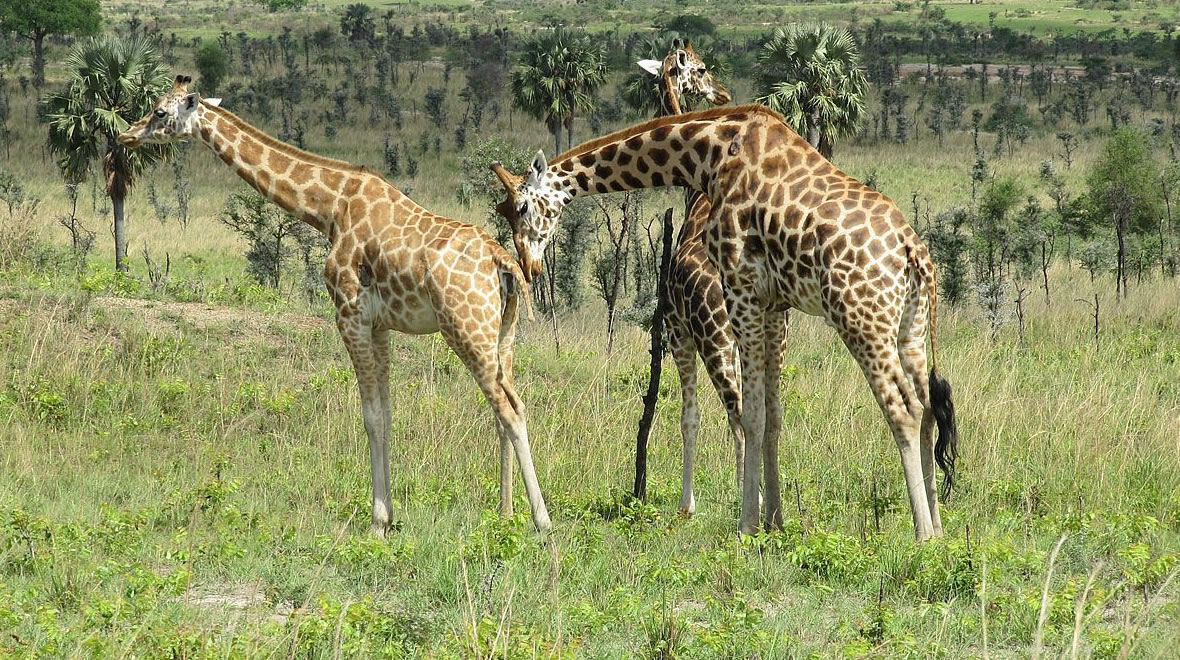
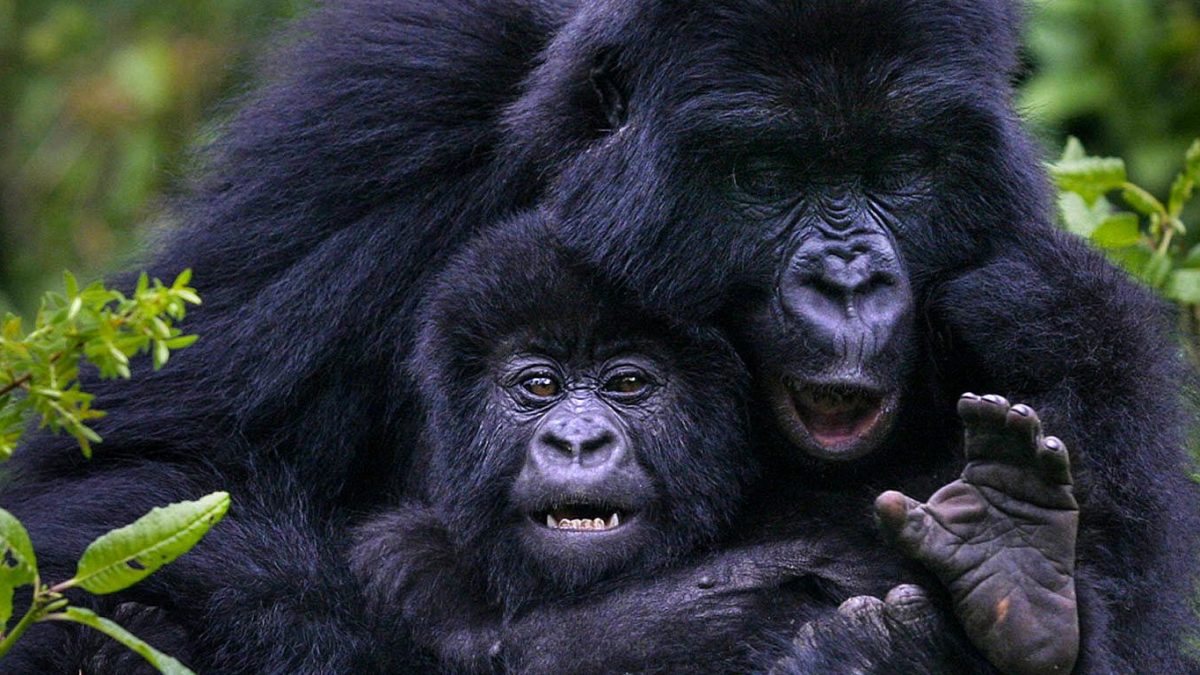
 The journey to
The journey to 
 Gorilla trekking in Bwindi Impenetrable Forest is not only an exhilarating adventure, but also a vital source of revenue for conservation efforts. The Uganda Wildlife Authority (UWA) works tirelessly to protect the gorillas and their habitat, and a portion of the trekking fees goes directly towards supporting these conservation efforts. Uganda Wildlife Authority also works closely with local communities to promote sustainable tourism practices and support community development projects. This not only helps to conserve the gorillas and their habitat but also provides economic benefits to the government and the local communities.
Gorilla trekking in Bwindi Impenetrable Forest is not only an exhilarating adventure, but also a vital source of revenue for conservation efforts. The Uganda Wildlife Authority (UWA) works tirelessly to protect the gorillas and their habitat, and a portion of the trekking fees goes directly towards supporting these conservation efforts. Uganda Wildlife Authority also works closely with local communities to promote sustainable tourism practices and support community development projects. This not only helps to conserve the gorillas and their habitat but also provides economic benefits to the government and the local communities.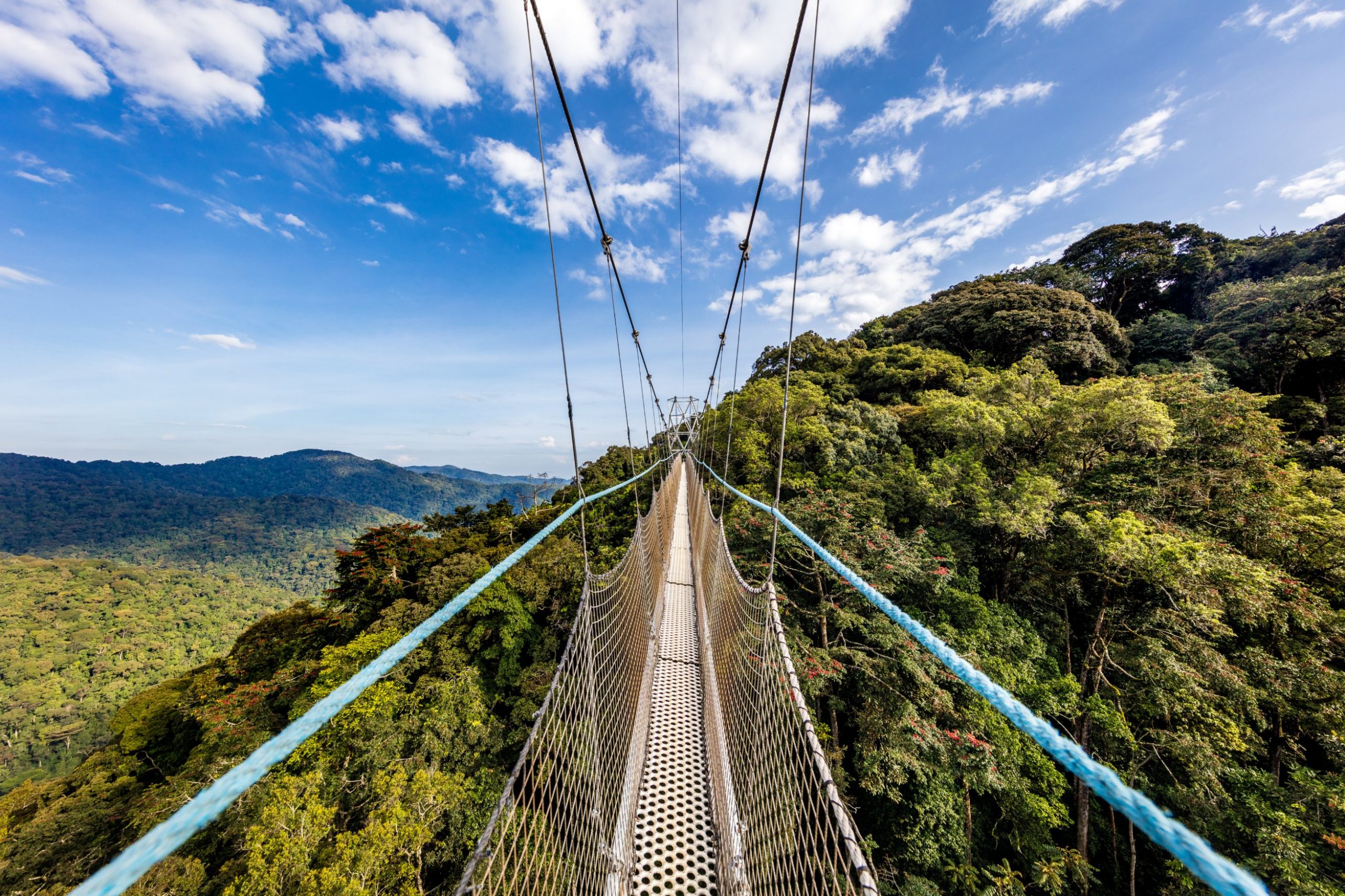
 Be part of the guided primate trekking experiences to meet up with man’s close relatives in thire natural habitats. Nyungwe Forest is renowned for its 13 primate species, including chimpanzees, L’Hoest’s monkeys, and the endangered golden monkey. Trekking through the forest to observe these primates is a highlight for many visitors.
Be part of the guided primate trekking experiences to meet up with man’s close relatives in thire natural habitats. Nyungwe Forest is renowned for its 13 primate species, including chimpanzees, L’Hoest’s monkeys, and the endangered golden monkey. Trekking through the forest to observe these primates is a highlight for many visitors. Explore the hidden treasures of Nyungwe Forest on foot by taking part in the walking experiences. Nyungwe Forest offers a variety of hiking trails, ranging from short nature walks to challenging multi-day treks. Popular trails include the Isumo Waterfall Trail, the Colobus Monkey Trail, and the Big Top Canopy Trail.
Explore the hidden treasures of Nyungwe Forest on foot by taking part in the walking experiences. Nyungwe Forest offers a variety of hiking trails, ranging from short nature walks to challenging multi-day treks. Popular trails include the Isumo Waterfall Trail, the Colobus Monkey Trail, and the Big Top Canopy Trail. Nyungwe Forest National Park offers a diverse range of accommodation options to suit every traveler’s budget and preference. From luxurious lodges nestled within the park’s verdant canopy to budget-friendly guesthouses and campsites, there’s something for everyone
Nyungwe Forest National Park offers a diverse range of accommodation options to suit every traveler’s budget and preference. From luxurious lodges nestled within the park’s verdant canopy to budget-friendly guesthouses and campsites, there’s something for everyone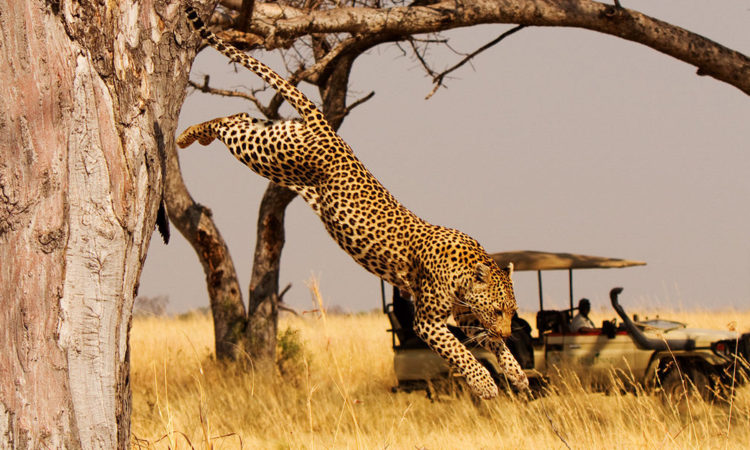
 Scheduled for morning, evening, and at times night, game drives are a not miss on your Rwanda tours with Authentic Africa Safaris. Embark on thrilling game drives in open-sided 4×4 vehicles, traversing the savannah and searching for wildlife. Experienced guides will share knowledge on different wild animals spotted in the park during game drives
Scheduled for morning, evening, and at times night, game drives are a not miss on your Rwanda tours with Authentic Africa Safaris. Embark on thrilling game drives in open-sided 4×4 vehicles, traversing the savannah and searching for wildlife. Experienced guides will share knowledge on different wild animals spotted in the park during game drives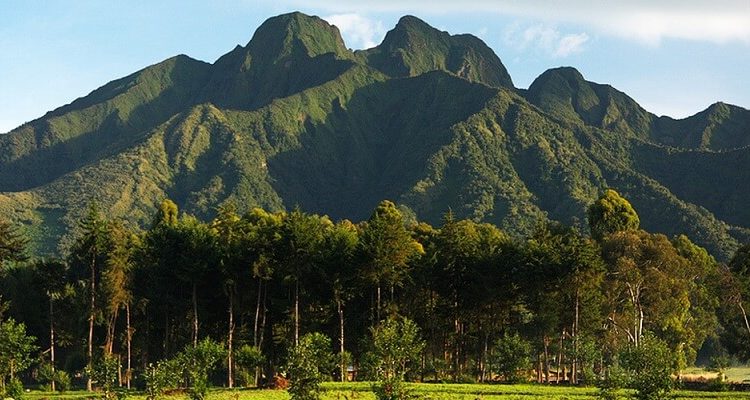
 Sheltering over 400 mountain gorillas, Volcanoes National Park is a center of gorilla trekking experience in Rwanda. 10 gorilla families have been habituated to trekking in the park, rewarding travelers with a once-in-a-lifetime experience.
Sheltering over 400 mountain gorillas, Volcanoes National Park is a center of gorilla trekking experience in Rwanda. 10 gorilla families have been habituated to trekking in the park, rewarding travelers with a once-in-a-lifetime experience. 
 For a night stay, Volcanoes National Park entails a long list of budget midrange and luxury accommodation facilities offering you comfortable and enjoyable food and sleeping services. Some of the best places to stay in Volcanoes National Park include Bisate Lodge, Davinci Gorilla Lodge, Virunga Lodge. Tiloreza Safari Lodge, Le Bambou Gorilla Lodge, Five Volcanoes Boutique Lodge, Sabyinyo Silverback Gorilla Lodge, Mountain Gorilla View Lodge and Kinigi Guest House, among others. Authentic Africa Safaris helps you reserve a room at your favorite Lodge
For a night stay, Volcanoes National Park entails a long list of budget midrange and luxury accommodation facilities offering you comfortable and enjoyable food and sleeping services. Some of the best places to stay in Volcanoes National Park include Bisate Lodge, Davinci Gorilla Lodge, Virunga Lodge. Tiloreza Safari Lodge, Le Bambou Gorilla Lodge, Five Volcanoes Boutique Lodge, Sabyinyo Silverback Gorilla Lodge, Mountain Gorilla View Lodge and Kinigi Guest House, among others. Authentic Africa Safaris helps you reserve a room at your favorite Lodge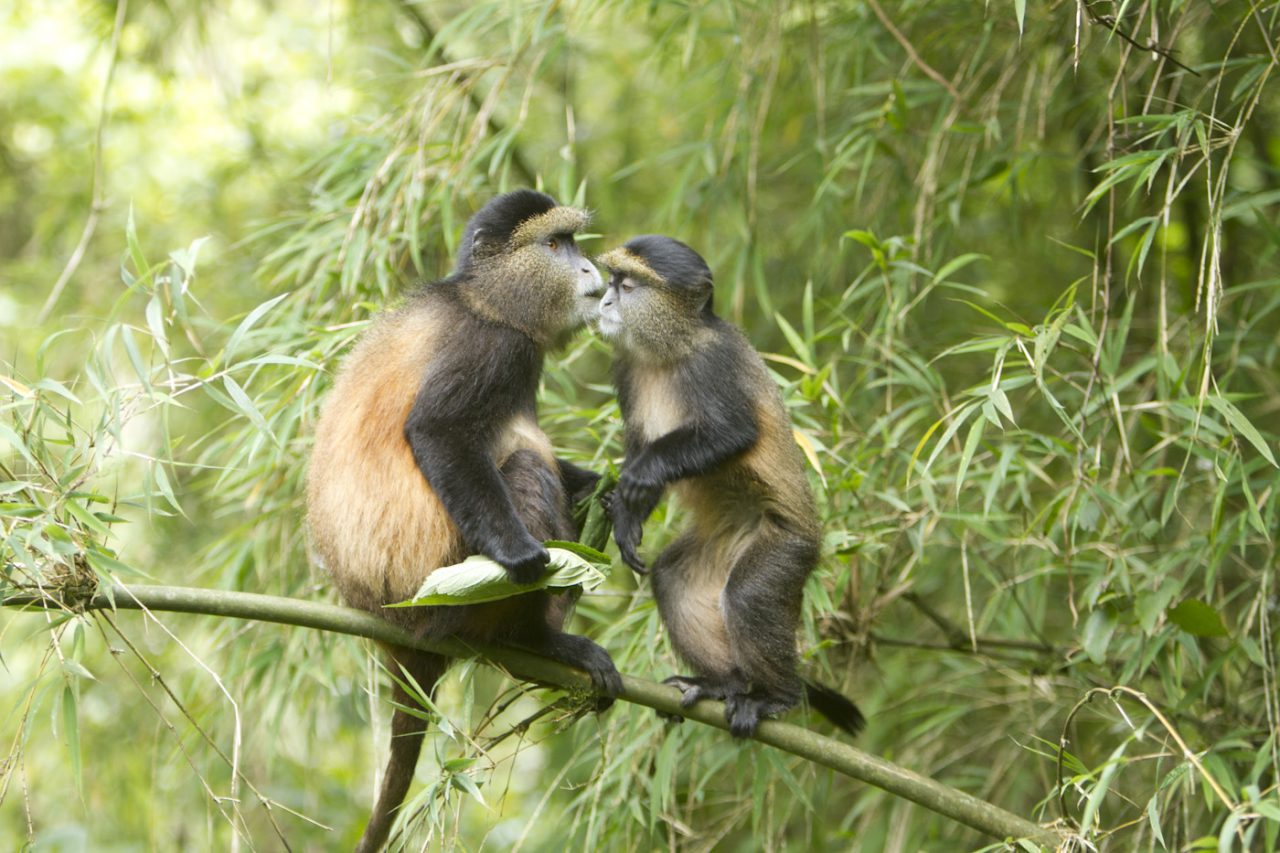
 Just like in any other primate trekking experience, travelers visiting Golden Monkeys are advised to pack the right things to ensure a peaceful and stress-free trekking experience. Among the things to carry for golden monkey trekking include
Just like in any other primate trekking experience, travelers visiting Golden Monkeys are advised to pack the right things to ensure a peaceful and stress-free trekking experience. Among the things to carry for golden monkey trekking include The cost of golden monkey trekking in Uganda and Rwanda varies. In Uganda, each permit costs $60 for foreign nonresidents, $60 for foreign residents, and UGX 40,000 for East African citizens.
The cost of golden monkey trekking in Uganda and Rwanda varies. In Uganda, each permit costs $60 for foreign nonresidents, $60 for foreign residents, and UGX 40,000 for East African citizens. In addition to golden monkeys, travelers to Mgahinga and Volcanoes National Park have other interesting things to see and do. These include Mountain gorilla trekking, cultural tours, mountain hiking, bird watching, nature walks, and colobus monkey trekking, among others. You can also visit Savannah Parks for game-viewing experiences and visit chimpanzees in Nyungwe Forest, Rwanda, and Kibale Forest National Park, Uganda
In addition to golden monkeys, travelers to Mgahinga and Volcanoes National Park have other interesting things to see and do. These include Mountain gorilla trekking, cultural tours, mountain hiking, bird watching, nature walks, and colobus monkey trekking, among others. You can also visit Savannah Parks for game-viewing experiences and visit chimpanzees in Nyungwe Forest, Rwanda, and Kibale Forest National Park, Uganda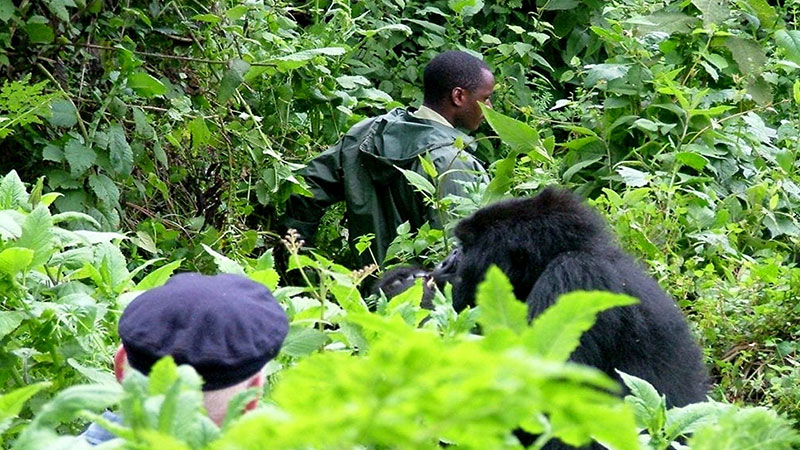
 For sleepovers, Rushaga has a variety of luxury, midrange, and budget lodges that offer affordable and excellent food and sleeping services to travelers. Authentic Africa Safaris helps you to choose and reserve the best lodges for your overnight in the Rushaga sector. Some of the popular lodges in Rushaga sector include Four Gorillas Lodge, Gorilla Hills Eco Lodge, Bwindi Jungle Lodge, Ichumbi Gorilla Lodge, Gorilla Valley Lodge, Rushaga Gorilla Safari Lodge, Rushaga Gorilla Camp
For sleepovers, Rushaga has a variety of luxury, midrange, and budget lodges that offer affordable and excellent food and sleeping services to travelers. Authentic Africa Safaris helps you to choose and reserve the best lodges for your overnight in the Rushaga sector. Some of the popular lodges in Rushaga sector include Four Gorillas Lodge, Gorilla Hills Eco Lodge, Bwindi Jungle Lodge, Ichumbi Gorilla Lodge, Gorilla Valley Lodge, Rushaga Gorilla Safari Lodge, Rushaga Gorilla Camp At the start of the gorilla habituation experience, travelers are gathered at Rushaga sector park headquarters and briefed on the rules and regulations of this adventure. These rules are put to ensure the safety of both travelers and endangered gorillas. These rules include
At the start of the gorilla habituation experience, travelers are gathered at Rushaga sector park headquarters and briefed on the rules and regulations of this adventure. These rules are put to ensure the safety of both travelers and endangered gorillas. These rules include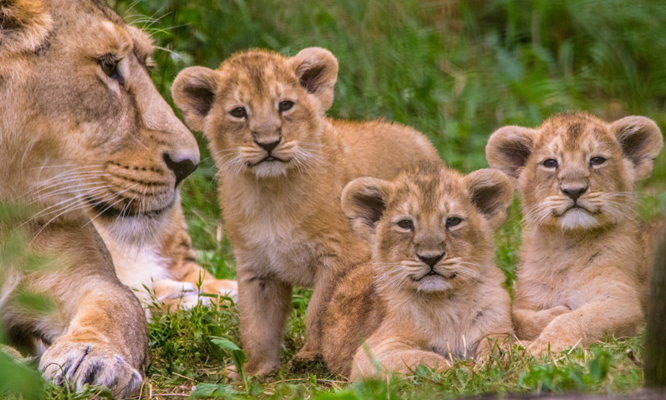
 Located in northwestern Uganda,
Located in northwestern Uganda,  Queen Elizabeth National Park, located in Kasese district in western Uganda, is yet another interesting destination for game viewing in Uganda. The Park is second to Murchison Falls National Park in terms of size, spreading over 1,978 square kilometers. This park offers diverse landscapes, from savannah plains to volcanic craters, and it’s famous for its tree-climbing lions in the Ishasha sector. In addition to the lions, Queen Elizabeth National Park has a high concentration of wild animals, which include Buffalos, Elephants, Leopards, Hyenas, Waterbucks, Uganda kobs, Warthogs, Topis, wild pigs, and a wide range of bird species.
Queen Elizabeth National Park, located in Kasese district in western Uganda, is yet another interesting destination for game viewing in Uganda. The Park is second to Murchison Falls National Park in terms of size, spreading over 1,978 square kilometers. This park offers diverse landscapes, from savannah plains to volcanic craters, and it’s famous for its tree-climbing lions in the Ishasha sector. In addition to the lions, Queen Elizabeth National Park has a high concentration of wild animals, which include Buffalos, Elephants, Leopards, Hyenas, Waterbucks, Uganda kobs, Warthogs, Topis, wild pigs, and a wide range of bird species. Having been ranked as the “True African Wilderness” Kidepo Valley National Park offers a more virgin game viewing experience. The park is located in the far northeastern part of Uganda in Karamoja region and it’s the least visited tourism destination in the Pearl of Africa. The few visits to the park have kept Kidepo Valley Park virgin, offering an off-beaten kind of experience. The park offers stunning scenery and a variety of wildlife, including Lions, cheetahs, Giraffes, Waterbucks, Uganda kobs, Warthogs, Topis, Oribis, Gazelles, and Elephants. The other interesting activities done in Kidepo Valley National Park include bird watching, Community tours, Nature Walks, Rock climbing
Having been ranked as the “True African Wilderness” Kidepo Valley National Park offers a more virgin game viewing experience. The park is located in the far northeastern part of Uganda in Karamoja region and it’s the least visited tourism destination in the Pearl of Africa. The few visits to the park have kept Kidepo Valley Park virgin, offering an off-beaten kind of experience. The park offers stunning scenery and a variety of wildlife, including Lions, cheetahs, Giraffes, Waterbucks, Uganda kobs, Warthogs, Topis, Oribis, Gazelles, and Elephants. The other interesting activities done in Kidepo Valley National Park include bird watching, Community tours, Nature Walks, Rock climbing Pian Upe Wildlife Reserve is Uganda’s second-largest tourism destination in Uganda after Murchison Falls National Park. The reserve is nestled in northeastern Uganda, spreading over 2,275 square kilometers of Land comprised of open acacia, woodlands, riverine forests, wetlands, caves, and Volcanic rocks. Game viewing, bird watching, nature walks, and scenic viewing are the top tourist activities at Pan Upe Wildlife Reserve
Pian Upe Wildlife Reserve is Uganda’s second-largest tourism destination in Uganda after Murchison Falls National Park. The reserve is nestled in northeastern Uganda, spreading over 2,275 square kilometers of Land comprised of open acacia, woodlands, riverine forests, wetlands, caves, and Volcanic rocks. Game viewing, bird watching, nature walks, and scenic viewing are the top tourist activities at Pan Upe Wildlife Reserve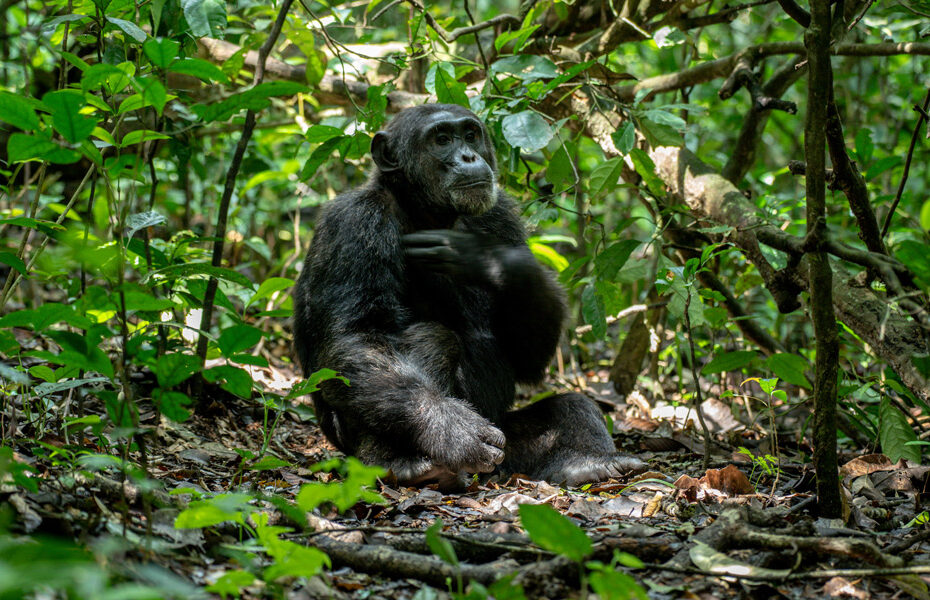
 Located in western Uganda, Kibale Forest National Park is the most popular destination for chimpanzee trekking in Uganda, renowned for its high chimpanzee density and diverse ecosystem. Kibale National Park is a MUST visit in Uganda for chimpanzee trekking. The forest is also known as the “ Primate Capital of the World”, sheltering 13 primate species for which the Chimpanzees are sought after! Chimpanzee Tracking introduces you to the closely related Cousins of human beings. Kibale Forest is so natural that all you listen to, are the sounds of wildlife! Chimpanzee trekking in Kibale Forest begins at Kanyanchu Visitor Information Centre where travelers are first registered and briefed on the dos and don’ts of the adventure. Our 3 days chimpanzee trek in Kibale Forest is the suitable package for you combined with a nature walk in Bigodi wetland sanctuary
Located in western Uganda, Kibale Forest National Park is the most popular destination for chimpanzee trekking in Uganda, renowned for its high chimpanzee density and diverse ecosystem. Kibale National Park is a MUST visit in Uganda for chimpanzee trekking. The forest is also known as the “ Primate Capital of the World”, sheltering 13 primate species for which the Chimpanzees are sought after! Chimpanzee Tracking introduces you to the closely related Cousins of human beings. Kibale Forest is so natural that all you listen to, are the sounds of wildlife! Chimpanzee trekking in Kibale Forest begins at Kanyanchu Visitor Information Centre where travelers are first registered and briefed on the dos and don’ts of the adventure. Our 3 days chimpanzee trek in Kibale Forest is the suitable package for you combined with a nature walk in Bigodi wetland sanctuary Located in Murchison Falls National Park, Budongo forest is yet another popular destination for chimpanzee trekking in Uganda. This pristine rainforest is home to a significant chimpanzee population, offering visitors the opportunity to observe these fascinating creatures in their natural environment. The contact rate here is around 80%, ensuring a high probability of a successful encounter. Enjoy an encounter with the endangered chimpanzees playing and chasing each other in your presence. Budongo Forest is normally muddy, long pants tucked into the boots is highly recommended to keep the aunts out
Located in Murchison Falls National Park, Budongo forest is yet another popular destination for chimpanzee trekking in Uganda. This pristine rainforest is home to a significant chimpanzee population, offering visitors the opportunity to observe these fascinating creatures in their natural environment. The contact rate here is around 80%, ensuring a high probability of a successful encounter. Enjoy an encounter with the endangered chimpanzees playing and chasing each other in your presence. Budongo Forest is normally muddy, long pants tucked into the boots is highly recommended to keep the aunts out Also known as the “Valley of Apes” Kyambura gorge offers you an exceptional chimpanzee trekking experience. Enjoy a chimpanzee trek in the underground of Kyambura Gorge located in the heart of Queen Elizabeth National Park. This dramatic gorge offers breathtaking views and a chance to spot chimpanzees in a stunning setting. While the contact rate here is lower than in Kibale and Budongo, the sheer beauty of the gorge makes it a worthwhile destination
Also known as the “Valley of Apes” Kyambura gorge offers you an exceptional chimpanzee trekking experience. Enjoy a chimpanzee trek in the underground of Kyambura Gorge located in the heart of Queen Elizabeth National Park. This dramatic gorge offers breathtaking views and a chance to spot chimpanzees in a stunning setting. While the contact rate here is lower than in Kibale and Budongo, the sheer beauty of the gorge makes it a worthwhile destination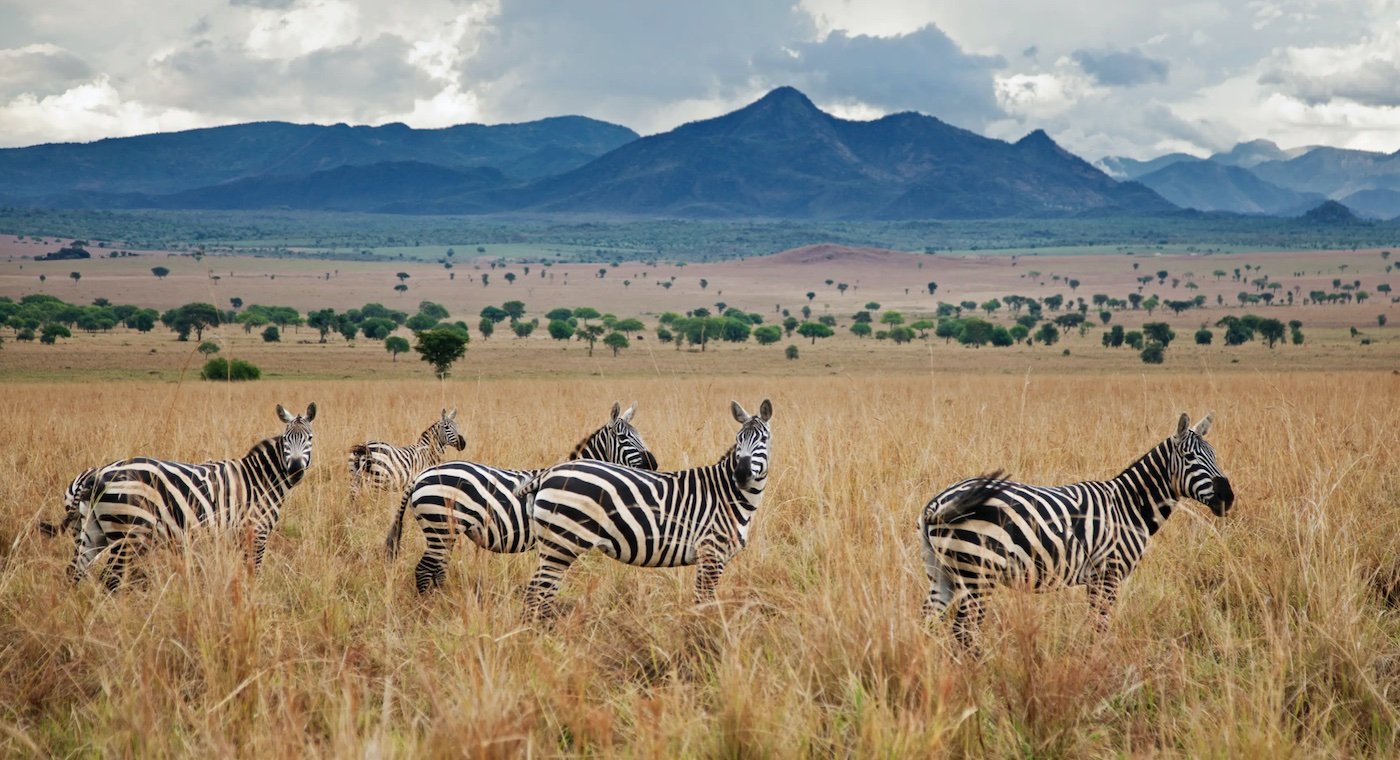
 Being home to a diverse range of
Being home to a diverse range of  A visit to local communities for a cultural performance is another interesting experience in Kidepo Valley National Park. Enjoy a visit to the Karamajo communities, the nomadic pastoralists who are believed to have migrated from Ethiopia in the 1600s. There you will learn about cattle keeping, milking, and how to process milk into different products. The other common tribe to visit in Kidepo Valley National Park are the IK people living in Murongole Mountain. These people were former hunter-gatherers who migrated from Ethiopia and first settled in Kenya before crossing to Uganda. The IK people are now surviving on beekeeping and subsistence farming. A cultural tour offers you the chance to learn and experience the traditions, norms, customs, and beliefs of these Indigenous people, Traditional dances and songs are performed as a gesture to welcome you to their communities
A visit to local communities for a cultural performance is another interesting experience in Kidepo Valley National Park. Enjoy a visit to the Karamajo communities, the nomadic pastoralists who are believed to have migrated from Ethiopia in the 1600s. There you will learn about cattle keeping, milking, and how to process milk into different products. The other common tribe to visit in Kidepo Valley National Park are the IK people living in Murongole Mountain. These people were former hunter-gatherers who migrated from Ethiopia and first settled in Kenya before crossing to Uganda. The IK people are now surviving on beekeeping and subsistence farming. A cultural tour offers you the chance to learn and experience the traditions, norms, customs, and beliefs of these Indigenous people, Traditional dances and songs are performed as a gesture to welcome you to their communities Be part of the guided mountain climbing experiences in Kidepo Valley National Park with Authentic Africa Safaris. The isolated park is home to Mount Murongole, Mount Lonyilli, and Mount Zulia. A hike to the summit of any Volcano offers you great views of the neighboring local communities and the whole park with wildlife there.
Be part of the guided mountain climbing experiences in Kidepo Valley National Park with Authentic Africa Safaris. The isolated park is home to Mount Murongole, Mount Lonyilli, and Mount Zulia. A hike to the summit of any Volcano offers you great views of the neighboring local communities and the whole park with wildlife there.